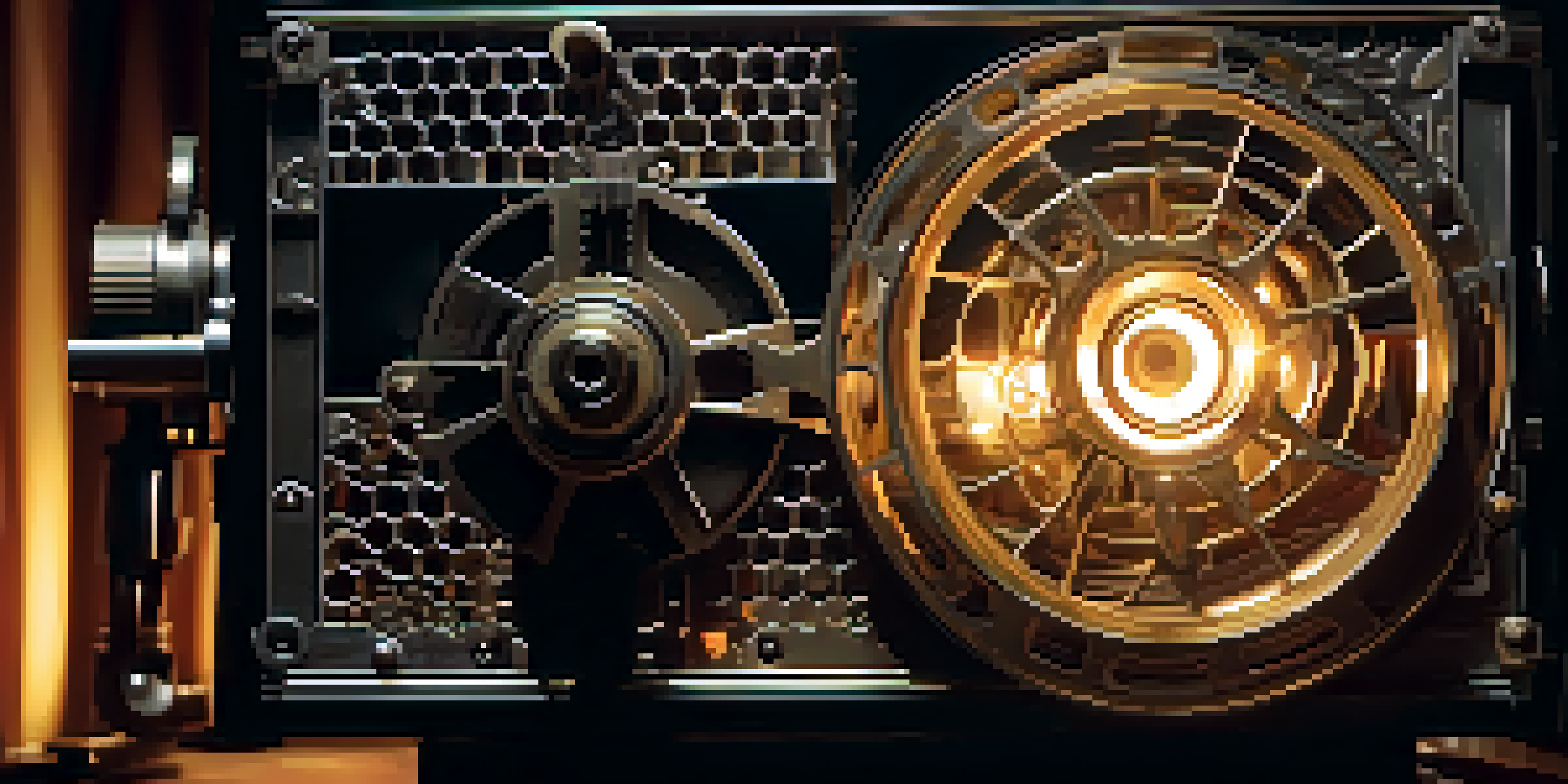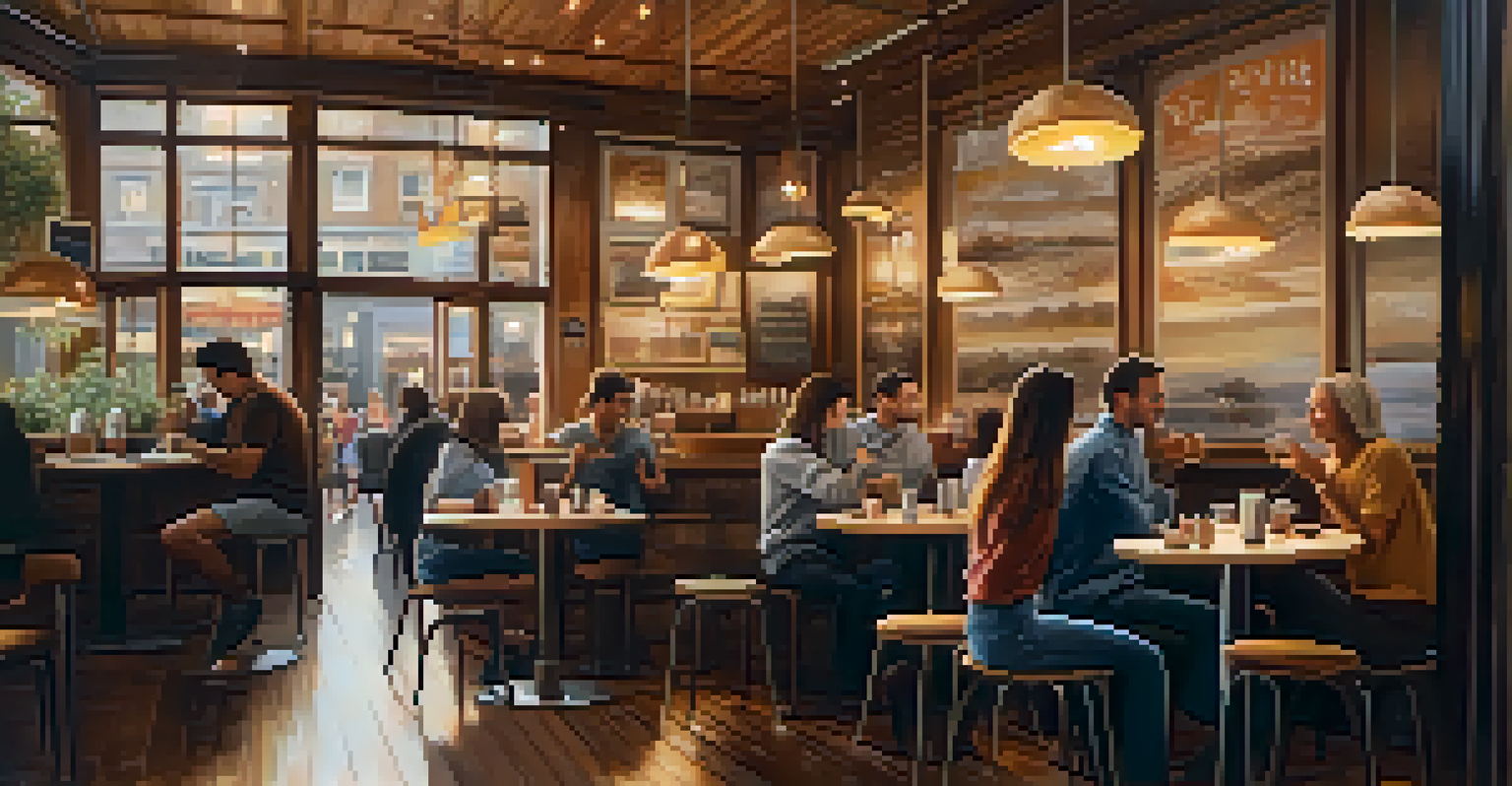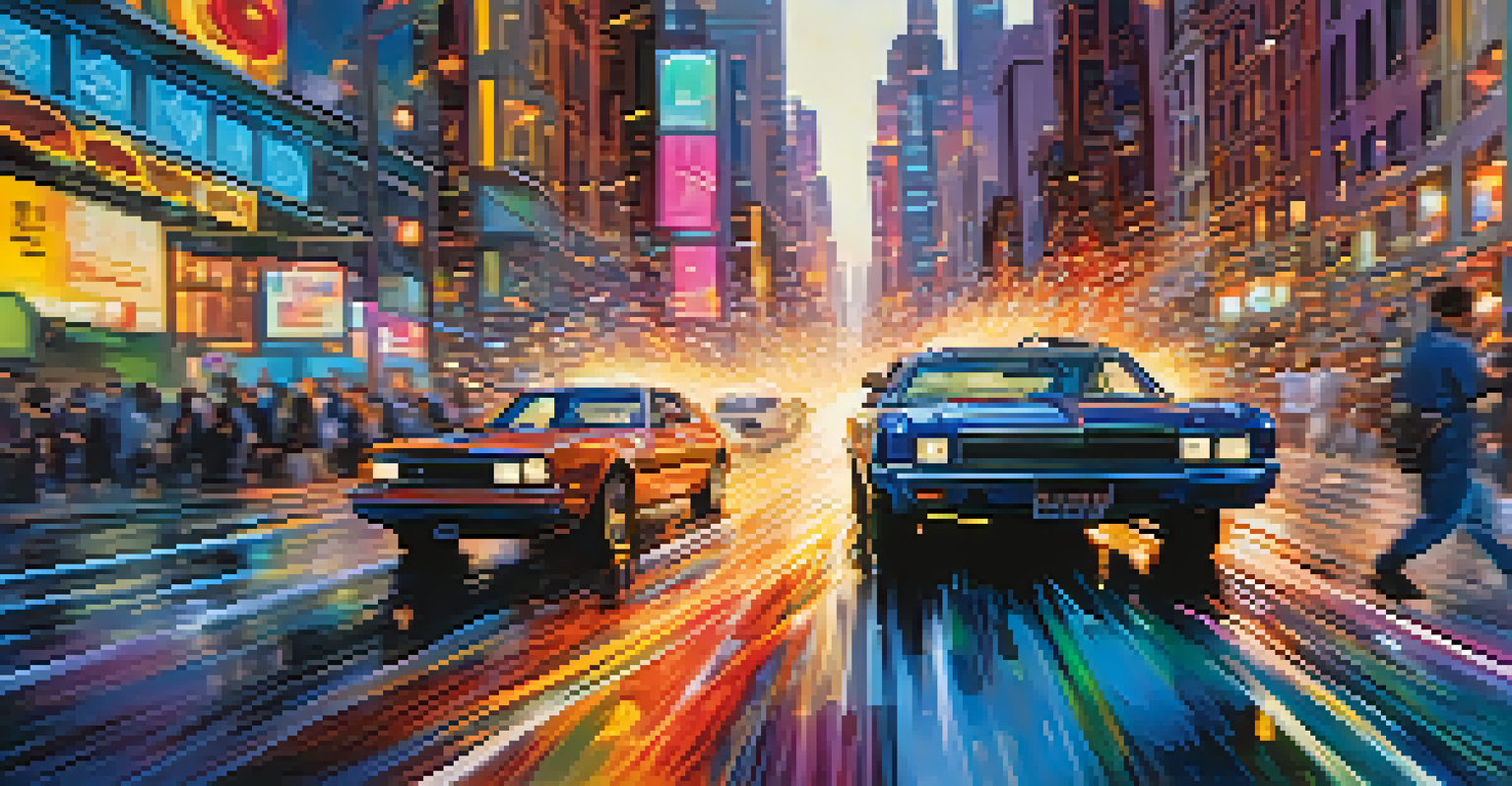The Relationship Between Sound and Visuals in Film

Understanding the Basics of Sound in Film
Sound in film encompasses dialogue, sound effects, and music, all of which play crucial roles in storytelling. Imagine watching a horror movie without the eerie music; it would lose much of its suspense. The combination of these sound elements sets the tone and mood of the film, engaging the audience on a deeper emotional level.
Sound is a huge part of storytelling. It’s not just a layer on top of the visuals; it’s part of the story itself.
For example, think about a romantic scene where soft music swells as two characters share a meaningful glance. The music amplifies the emotions conveyed through their expressions, creating a more immersive experience. Conversely, an action scene might feature loud, explosive sounds to evoke excitement and adrenaline.
Ultimately, sound is not just an accessory to visuals; it’s a fundamental component that shapes how we perceive and feel about what we see on screen.
The Role of Music in Setting the Mood
Music plays a pivotal role in establishing the emotional landscape of a film. It can evoke feelings of joy, sadness, tension, or relief, guiding the audience's reactions as the story unfolds. For instance, the iconic score of 'Jaws' signals impending danger, instantly heightening the viewer's anxiety.

Furthermore, filmmakers often use leitmotifs—musical themes associated with specific characters or ideas—to create familiarity and deepen emotional connections. When we hear a particular melody tied to a character, it enhances our understanding of their journey and struggles.
Sound Shapes Film Storytelling
Sound elements like music, dialogue, and effects are essential in creating emotional depth and enhancing the viewer's experience.
In essence, music transforms scenes from mere visuals into evocative moments that resonate with viewers long after the credits roll.
How Sound Effects Enhance Realism
Sound effects enrich the cinematic experience by adding layers of realism. From the crunch of footsteps on gravel to the distant hum of city life, these auditory details create a believable world for the audience. Without sound effects, a visually stunning scene might feel flat and disconnected.
Music can change the world because it can change people.
For example, consider a scene depicting a bustling café. The clinking of cups, chatter of patrons, and soft background music combine to transport viewers into that lively atmosphere. Each sound effect serves to immerse us further into the film's setting.
In many ways, sound effects act as the unsung heroes of film, often unnoticed but crucial in crafting an authentic experience.
Dialogue: The Heart of Character Interaction
Dialogue is the primary way filmmakers convey characters' thoughts, emotions, and relationships. It’s through conversation that we learn about a character’s motivations and conflicts. A well-written dialogue can leave a lasting impact, making characters memorable and relatable.
Think about films where certain lines become iconic, often quoted by fans. These moments are usually accompanied by specific sound choices that enhance their meaning, whether it’s a pause for dramatic effect or the background score swelling.
Music Sets Emotional Tone
The right musical score can evoke specific emotions, guiding audience reactions and deepening connections to characters.
Thus, dialogue is not just about what is said; it’s about how it’s delivered and the sounds that accompany it, adding layers of depth to character interactions.
The Synergy Between Sound and Visuals
The interplay between sound and visuals is where the magic truly happens in film. This synergy creates a cohesive narrative that captivates audiences, making them feel as if they are part of the story. When sound and visuals complement each other, they enhance the overall emotional impact.
Consider the use of silence in a tense moment. The absence of sound can create an unsettling atmosphere, making viewers hold their breath in anticipation. When the visuals of a character's anxious expression are paired with this silence, the effect becomes even more powerful.
In essence, the right balance between sound and visuals can elevate a film from simply entertaining to truly unforgettable.
Editing: The Craft of Sound Design
Sound design during the editing process is critical in shaping how sound and visuals work together. Editors meticulously cut and layer sound to ensure it aligns seamlessly with the visual narrative. This attention to detail can significantly enhance the film's rhythm and pacing.
For instance, in action sequences, the timing of sound effects can heighten excitement and urgency. A well-timed explosion sound or a dramatic score shift can make a scene feel more dynamic and engaging.
Cultural Influences in Sound Design
Different cultural contexts shape how sound and visuals are used in film, enriching storytelling with unique perspectives.
Ultimately, skilled editing ensures that sound serves the story, creating a harmonious relationship between what we see and hear.
Cultural Influences on Sound and Visuals
Cultural context plays a significant role in how sound and visuals are perceived in film. Different cultures have varying traditions and expectations regarding music, dialogue, and sound effects. This diversity enriches the cinematic landscape, offering unique storytelling perspectives.
For example, Bollywood films often feature vibrant musical numbers that blend seamlessly with the narrative, while Western films might opt for more understated soundtracks. These choices reflect cultural values and storytelling styles, making each film a unique experience.

Understanding these cultural nuances can deepen our appreciation of global cinema and highlight the artistry involved in crafting sound and visuals.
The Future of Sound and Visual Integration in Film
As technology advances, the integration of sound and visuals in film continues to evolve. Innovations like immersive sound systems and virtual reality experiences are pushing the boundaries of how audiences interact with film. This evolution promises even greater emotional engagement and realism in storytelling.
For instance, advancements in spatial audio allow sounds to move around the audience, creating a more immersive experience. Imagine being able to hear a character whisper right next to you, enhancing the connection to the story.
The future of film holds exciting possibilities, where the relationship between sound and visuals will become even more intricate and engaging, drawing viewers into new worlds like never before.